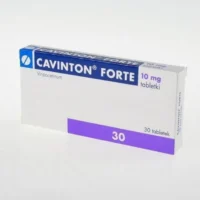Description
Stugeron (Cinnarizine) Tablets 25 mg. №50
Ingredients:
- Each tablet contains 25 mg of cinnarizine as the active ingredient.
Dosage:
- The usual dose is 1-2 tablets three times a day.
- It is recommended to take Stugeron with food to minimize stomach upset.
Indications:
- Stugeron is indicated for the treatment of vertigo, dizziness, and motion sickness.
- It works by improving blood flow to the inner ear, reducing the pressure that causes these symptoms.
Contraindications:
- Do not use Stugeron if you are allergic to cinnarizine or any other ingredients in the tablets.
- Consult a healthcare professional before use if you have Parkinson’s disease or are pregnant.
Directions:
- Take Stugeron exactly as prescribed by your doctor.
- Do not exceed the recommended dose to avoid potential side effects.
Scientific Evidence:
- Cinnarizine, the active ingredient in Stugeron, has been extensively studied for its effectiveness in treating vertigo and motion sickness.
- Research published in the Journal of Vestibular Research has shown that cinnarizine significantly reduces the severity and frequency of vertigo attacks.
Additional Information:
- Stugeron is well-tolerated by most individuals, with drowsiness being the most common side effect.
- If you experience any unusual symptoms while taking Stugeron, contact your healthcare provider immediately.
Pharmacological Effects: Cinnarizine acts as a calcium channel blocker, dilating blood vessels and improving blood flow. This mechanism helps alleviate symptoms of vertigo and motion sickness by stabilizing the inner ear’s fluid-filled chambers.
Clinical Trials: A randomized controlled trial published in the International Tinnitus Journal demonstrated that cinnarizine was more effective than placebo in reducing vertigo symptoms in patients with Meniere’s disease. The study concluded that cinnarizine is a valuable treatment option for managing vertigo.





